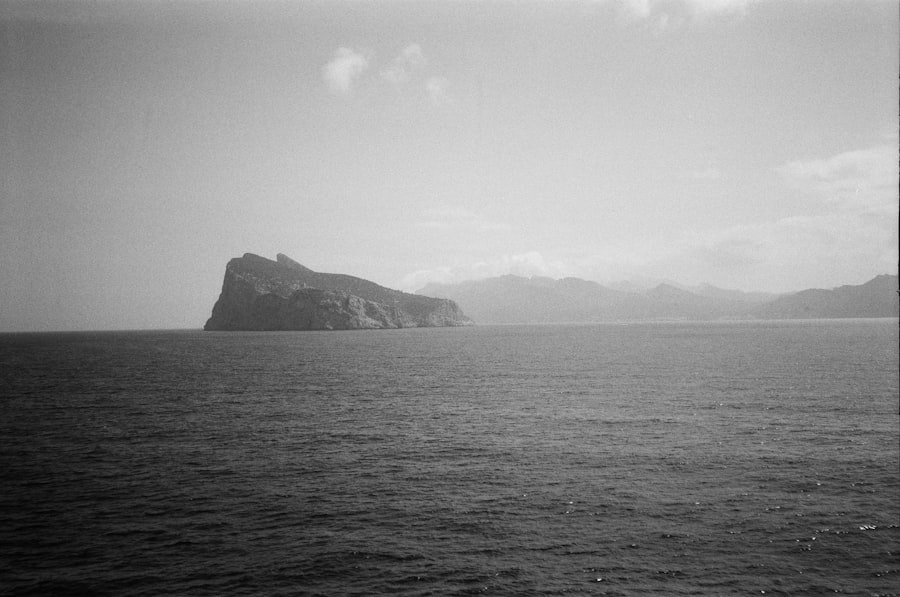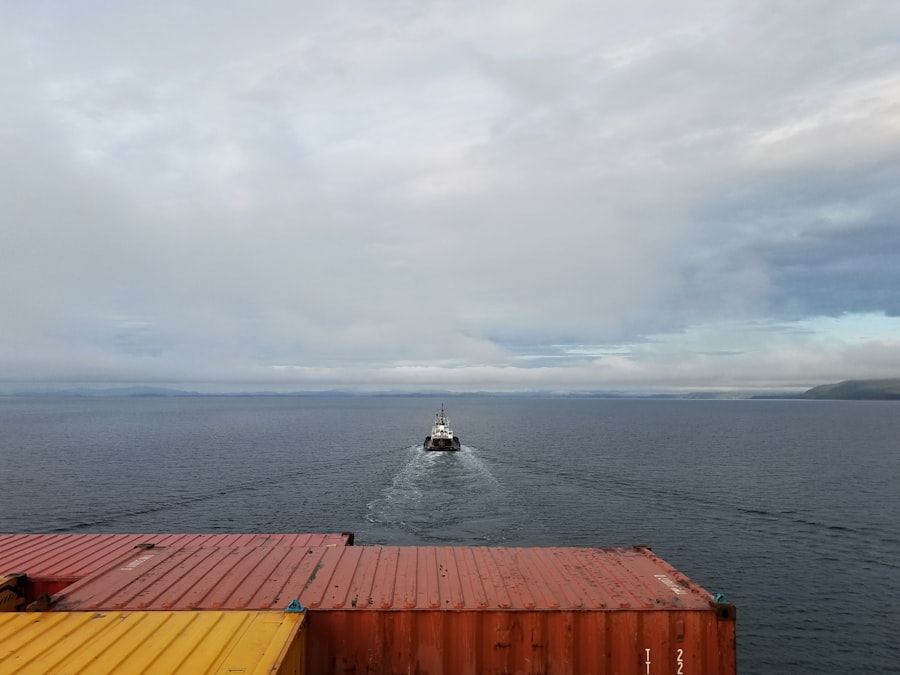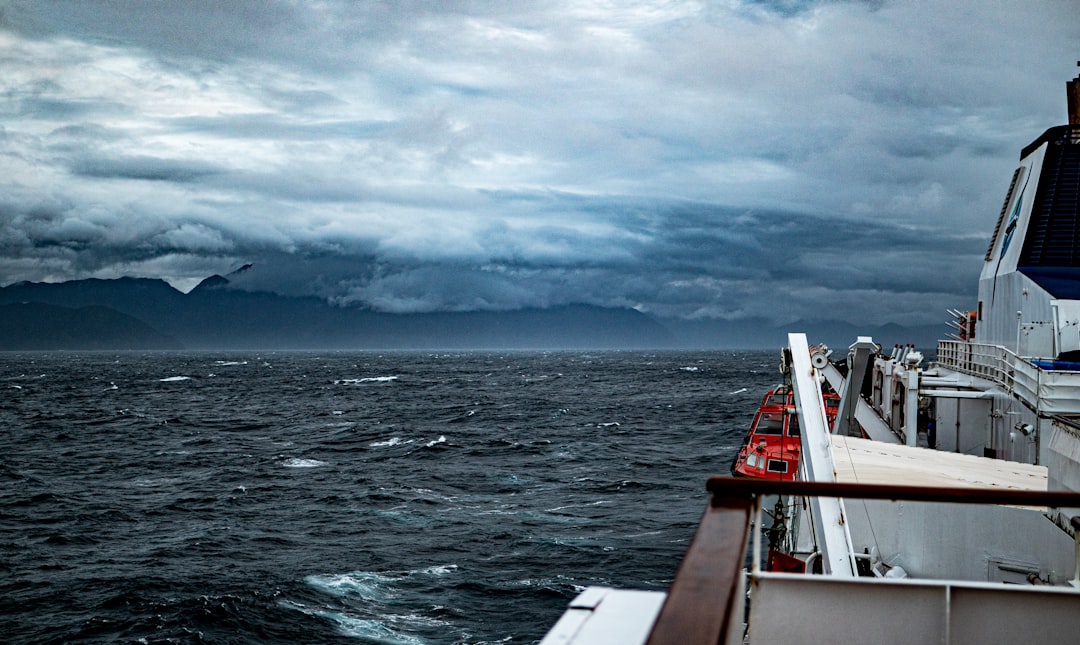The Drake Passage, a body of water situated between the southern tip of South America and Antarctica, is renowned for its tumultuous seas and unpredictable weather. Named after the English explorer Sir Francis Drake, who navigated these waters in the late 16th century, the passage serves as a critical maritime route for vessels traveling to and from Antarctica. Stretching approximately 600 miles, it is often regarded as one of the most challenging stretches of ocean in the world.
The passage is not only significant for its geographical location but also for its ecological importance, as it connects the Atlantic and Pacific Oceans, facilitating the movement of marine life and influencing global climate patterns. Navigating the Drake Passage is an adventure that many travelers seek, particularly those embarking on expeditions to Antarctica. However, the passage is infamous for its rough seas, which can pose significant challenges for even the most seasoned mariners.
The unpredictable nature of the waters can lead to experiences ranging from mild swells to intense storms, making it essential for travelers to be well-informed about what to expect. Understanding the weather patterns, the best times to visit, and how to prepare for potential rough conditions can greatly enhance the experience of crossing this iconic maritime route.
Key Takeaways
- Drake Passage is a treacherous body of water located between the southern tip of South America and the northern tip of Antarctica.
- Weather patterns in Drake Passage are characterized by strong winds, high waves, and rapidly changing conditions due to the convergence of the Atlantic, Pacific, and Southern oceans.
- The best time of year to visit Drake Passage is during the austral summer (November to March) when the weather is relatively milder and there is less chance of encountering extreme conditions.
- Factors that influence calm conditions in Drake Passage include the position of the polar front, the strength and direction of the westerly winds, and the presence of high or low-pressure systems.
- Tips for finding calm weather in Drake Passage include booking a trip during the austral summer, choosing a larger and more stable vessel, and being flexible with travel dates to avoid rough weather.
- Calm conditions are crucial for safe travel through Drake Passage, as rough seas can lead to seasickness, discomfort, and potential safety hazards for passengers and crew.
- Safety considerations for traveling through Drake Passage include ensuring that the vessel is equipped with proper safety equipment, following the instructions of the crew, and being prepared for the possibility of rough conditions.
- To prepare for potential rough conditions in Drake Passage, travelers should pack appropriate clothing, medication for seasickness, and be mentally prepared for the possibility of encountering challenging weather.
- Alternative routes and transportation options for avoiding rough seas in Drake Passage include flying to or from Antarctica, taking a longer but more sheltered route through the Beagle Channel, or choosing a cruise that focuses on exploring the Antarctic Peninsula without crossing the Drake Passage.
- Testimonials from experienced travelers about calm conditions in Drake Passage highlight the awe-inspiring beauty of the Antarctic landscape, the unique wildlife encounters, and the sense of accomplishment that comes with crossing this legendary body of water.
- In conclusion, navigating Drake Passage requires careful planning, flexibility, and a respect for the power of the sea. While rough conditions are possible, with the right preparation and timing, travelers can safely experience the wonders of Antarctica and the Southern Ocean.
Weather patterns in Drake Passage
The weather patterns in the Drake Passage are notoriously volatile, influenced by a combination of geographical features and oceanic currents. The passage is located at a convergence point where cold Antarctic waters meet warmer currents from the north, creating a unique climatic environment. This interaction often results in rapidly changing weather conditions, with strong winds and heavy seas being common occurrences.
The region is characterized by its frequent storms, which can arise with little warning, leading to challenging navigation conditions. In addition to wind and waves, fog and precipitation are also prevalent in the Drake Passage. The combination of cold air from Antarctica and warmer air from the Atlantic can create thick fog banks that reduce visibility significantly.
Rain and snow are not uncommon, particularly during the winter months. Travelers should be prepared for a range of weather conditions, as the passage can shift from calm to chaotic in a matter of hours. Understanding these weather patterns is crucial for anyone planning to traverse this formidable stretch of ocean.
Best time of year to visit Drake Passage

The best time to visit the Drake Passage largely depends on the type of experience travelers seek. Generally, the austral summer months from November to March are considered ideal for crossing this waterway. During this period, temperatures are milder, and wildlife activity is at its peak, making it an excellent time for those interested in observing seals, whales, and various seabird species.
The longer daylight hours also provide ample opportunities for exploration and photography. However, even during the summer months, conditions can vary significantly. While some days may offer smooth sailing, others can present formidable challenges.
Travelers should remain flexible with their plans and be prepared for sudden changes in weather. It is also worth noting that while summer offers more favorable conditions, it is still essential to monitor forecasts closely and choose travel dates wisely to maximize the chances of encountering calmer seas.
Factors that influence calm conditions in Drake Passage
| Factor | Description |
|---|---|
| Wind Speed | The lower the wind speed, the calmer the conditions in Drake Passage. |
| Sea Surface Temperature | Warmer sea surface temperatures can contribute to calmer conditions. |
| Pressure Systems | Stable pressure systems can lead to more tranquil conditions. |
| Ice Conditions | Less ice in the passage can result in calmer waters. |
Several factors contribute to achieving calm conditions in the Drake Passage, although they can be difficult to predict. One significant factor is atmospheric pressure systems. High-pressure systems tend to bring more stable weather conditions, resulting in calmer seas.
Conversely, low-pressure systems are often associated with stormy weather and rough seas. Understanding these pressure systems can help travelers gauge when conditions might be more favorable for crossing.
Winds that blow from the north can create relatively calmer conditions in the passage, while strong westerly winds can lead to choppy waters. Additionally, local topography plays a role; certain areas may offer natural protection from prevailing winds and waves. By considering these factors and monitoring weather forecasts closely, travelers can increase their chances of experiencing smoother sailing through this challenging maritime route.
Tips for finding calm weather in Drake Passage
For those determined to find calm weather while traversing the Drake Passage, several strategies can be employed. First and foremost, staying informed about current weather conditions is crucial. Utilizing reliable weather apps or websites that provide real-time updates on wind speeds and wave heights can help travelers make informed decisions about their journey.
Additionally, consulting with experienced crew members or expedition leaders can provide valuable insights into navigating the passage during more favorable conditions. Timing is also essential when seeking calm weather. As previously mentioned, traveling during the austral summer months generally offers better chances for smoother seas.
However, within this timeframe, certain weeks may be more favorable than others based on historical weather patterns. Researching past weather data or seeking advice from seasoned travelers can help pinpoint optimal travel dates. Lastly, being flexible with travel plans allows for adjustments based on changing weather forecasts, increasing the likelihood of encountering calmer conditions.
Importance of calm conditions for travel through Drake Passage

Calm conditions in the Drake Passage are vital not only for passenger comfort but also for safety during transit. Rough seas can lead to significant discomfort for travelers, causing seasickness and anxiety among those unaccustomed to turbulent waters. In extreme cases, severe weather can pose risks to vessel stability and safety, making it imperative for ships to navigate under more favorable conditions whenever possible.
Moreover, calm conditions enhance the overall experience of crossing the passage. Travelers are more likely to enjoy scenic views of the surrounding landscapes and wildlife when seas are smooth. Opportunities for photography and wildlife observation increase significantly in calmer waters, allowing passengers to fully appreciate the beauty of this unique maritime environment.
Thus, prioritizing calm conditions not only ensures safety but also enriches the journey through one of the world’s most remarkable oceanic routes.
Safety considerations for traveling through Drake Passage
Safety should always be a top priority when traveling through the Drake Passage due to its unpredictable nature. Travelers should ensure that they are equipped with appropriate safety gear and that they understand emergency procedures onboard their vessel. Life jackets should be readily available, and passengers should familiarize themselves with evacuation routes and protocols in case of an emergency.
Additionally, it is essential for travelers to heed the advice of experienced crew members regarding safety measures during rough seas. This may include securing personal belongings, remaining seated during turbulent periods, and avoiding unnecessary movement around the ship when conditions worsen. By being proactive about safety considerations and following guidelines provided by crew members, travelers can significantly reduce risks associated with navigating this challenging waterway.
How to prepare for potential rough conditions in Drake Passage
Preparation is key when it comes to facing potential rough conditions in the Drake Passage. Travelers should pack appropriately by bringing along motion sickness remedies such as over-the-counter medications or natural alternatives like ginger tablets. Wearing comfortable clothing that allows for easy movement can also help passengers adapt to changing conditions onboard.
In addition to personal comfort items, travelers should consider bringing entertainment options such as books or games to help pass time during rough patches at sea. Having a plan in place for how to cope with seasickness or discomfort can make a significant difference in overall enjoyment during the journey.
Alternative routes and transportation options for avoiding rough seas in Drake Passage
For those who wish to avoid the potential challenges posed by the Drake Passage altogether, alternative routes and transportation options exist. Some travelers opt for air travel directly to Antarctica via charter flights that bypass the passage entirely. This option allows passengers to skip the often tumultuous sea crossing while still reaching their destination efficiently.
Additionally, some cruise lines offer itineraries that include alternative routes around Cape Horn or through other channels that may provide smoother sailing experiences. While these options may take longer or require additional planning, they can offer peace of mind for those concerned about navigating rough waters. Exploring these alternatives allows travelers to tailor their journeys according to their comfort levels and preferences.
Testimonials from experienced travelers about calm conditions in Drake Passage
Many seasoned travelers have shared their experiences regarding calm conditions in the Drake Passage, highlighting both challenges and triumphs during their journeys. One traveler recounted a particularly smooth crossing during a late December voyage when they were greeted by clear skies and gentle swells. They described how this serene experience allowed them to fully appreciate the breathtaking scenery and wildlife encounters along the way.
Conversely, another traveler shared their experience of navigating through rough seas during an early November trip when storms were prevalent. They emphasized how preparation played a crucial role in their comfort level during turbulent moments at sea. Despite facing challenging conditions, they noted that moments of calm amidst the chaos provided opportunities for reflection and connection with fellow passengers who shared similar experiences.
Conclusion and final thoughts on navigating Drake Passage
Navigating the Drake Passage presents both challenges and rewards for those seeking adventure in one of the world’s most iconic maritime routes. Understanding weather patterns, preparing for potential rough conditions, and prioritizing safety are essential components of a successful journey through these waters. While calm conditions are ideal for travel through the passage, being adaptable and informed can enhance any experience.
Ultimately, whether travelers encounter smooth sailing or turbulent waters, each crossing offers unique opportunities for exploration and discovery. The beauty of this remarkable region lies not only in its stunning landscapes but also in its capacity to challenge those who dare to traverse its depths. With careful planning and an adventurous spirit, navigating the Drake Passage can become an unforgettable chapter in any traveler’s journey.
The Drake Passage, known for its turbulent waters, is a significant route for ships traveling between the Atlantic and Pacific Oceans. Understanding when this passage is calmest can be crucial for planning a safe journey. According to an article on MyGeoQuest, the calmest periods typically occur during the Southern Hemisphere’s summer months, from December to February. During this time, the weather conditions are generally more stable, reducing the risk of encountering severe storms. This information is invaluable for travelers and researchers planning expeditions to Antarctica, as it helps in minimizing the challenges posed by the notoriously unpredictable seas of the Drake Passage.
WATCH NOW! Drake Passage: Earth’s Deadliest Waters Revealed
FAQs
What is Drake Passage?
Drake Passage is the body of water between the southern tip of South America and the South Shetland Islands of Antarctica. It is known for its rough seas and challenging sailing conditions.
When is Drake Passage the calmest?
The calmest time to cross Drake Passage is during the austral summer, which is from November to March. During this time, the weather is relatively milder and the sea conditions are generally calmer compared to the rest of the year.
Why is Drake Passage known for rough seas?
Drake Passage is known for its rough seas due to the convergence of the Atlantic, Pacific, and Southern oceans. The strong westerly winds and the lack of any landmass to disrupt the flow of the currents contribute to the rough conditions in the area.
Are there any specific months when Drake Passage is particularly calm?
While there are no guarantees of calm seas, the months of December and January are often considered to have slightly calmer conditions in Drake Passage. However, it is important to note that weather and sea conditions can still be unpredictable during these months.
What are the best ways to prepare for crossing Drake Passage?
To prepare for crossing Drake Passage, it is recommended to pack appropriate clothing for cold and wet conditions, as well as seasickness medication. Traveling with an experienced and reputable expedition company can also help ensure a safer and more comfortable crossing.
